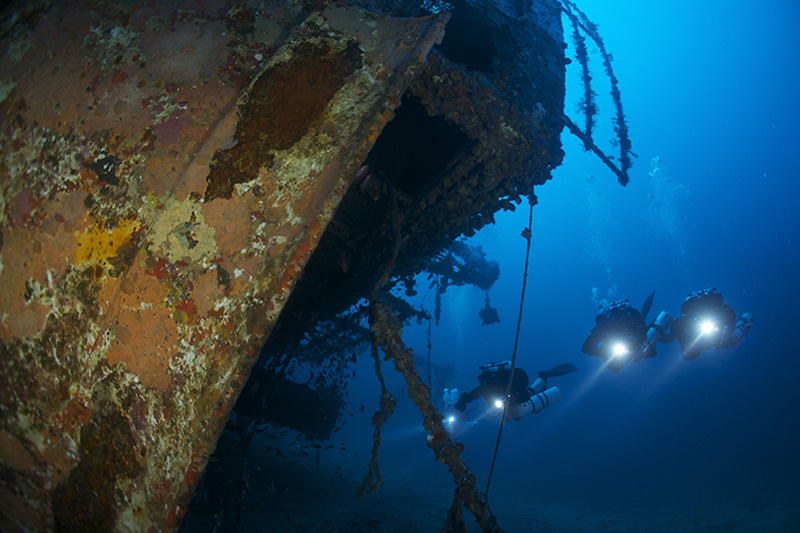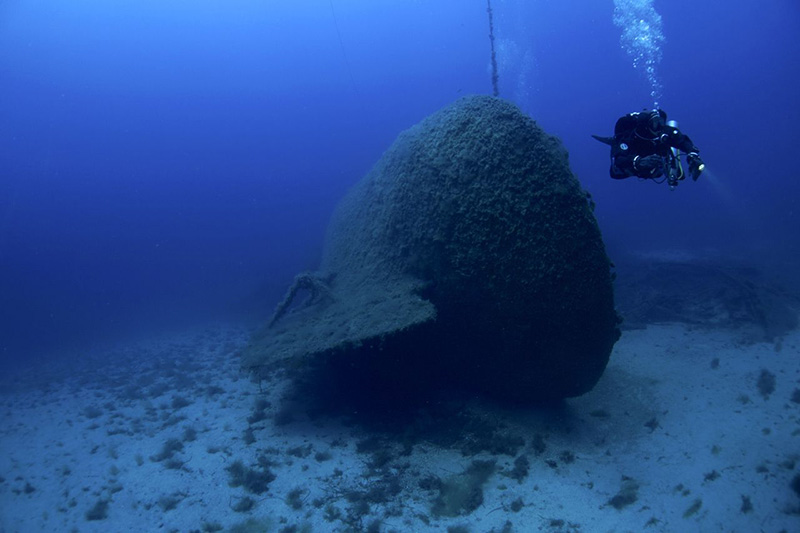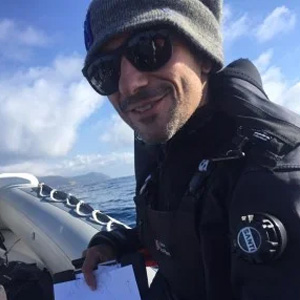Deep diving represents one of the most fascinating and challenging underwater experiences, but it requires specific knowledge and preparation to ensure the safety of the diver. In this article, we’ll explore what deep diving entails, the necessary certifications, the risks, the wonders you can admire.
Index:
What is meant by deep diving?
The concept of deep diving changes depending on the diver you are dealing with. As a novice Open Water Diver, qualified to go down to 18 meters, the 40 meters reached by Deep divers already seem like an abyss. With more experience, everything changes: the more you dive and delve deeper into the theory, the more those previously thought to be inaccessible depths become an objective within reach.
Certifications you need to start your adventure
The aim of each course is to train divers who are able to dive safely at the depth they are trained for, and this is precisely the reason why for the initial levels the depth is rather reduced: it allows new divers to gain experience in shallow water, before going on with the next level.
In recreational diving, there are 3 levels of licence to reach a depth of 40 meters, before entering the world of technical diving:
- Open Water Diver: this is the entry-level certification for recreational divers. It allows dives up to 18 meters.
- Advanced Open Water Diver: with this certification, divers can reach depths of up to 30 meters (100 feet)), dealing with topics that broaden those already covered in the Open Water Diver course.
- Deep Diver: this certification allows divers to explore depths up to 40 meters, the maximum permitted for recreational diving. The course includes more information on deep dive management.
How deep can a diver go?
After obtaining these first certifications and gaining the necessary experience, many divers are driven by the desire to know what’s deeper, thus approaching the world of technical diving, which allows them to descend even to 100 meters: obviously, again, with the correct experience and training. Technical diving involves the use of trimix (oxygen, nitrogen and helium mix) and decompression mixes, suitable for managing the greater depth they reach.
Technical courses are themselves divided depending on the different depths they allow you to reach:
- TECH 1 UTD: it enables you to reach a depth of 48 meters, using one decompression gas. It is the first level to approach technical diving, and a big step forward for those who have only done recreational diving, since it allows you to stay on the bottom for much longer times, enjoying incredible landscapes.
- TECH 2 UTD: it extends the depth limit to 60 meters, with 2 decompression mixes, and expands the variety of dive sites that can be explored.
- TECH 3 UTD: with this course you acquire the skills to dive up to 75 meters of depth with 3 decompression mixes, a considerable depth that requires a high level of experience.
The perfect choice to explore these depths (and overcome them) is the use of the rebreather, as it optimizes the breathing mixes as well as the time spent on the bottom. Many divers have chosen to use this equipment to make the most of the time spent underwater.
What happens if you go deep?
When the depth we want to reach increases, the level of training we need to manage the dive in the best way, safely, and therefore having fun, also increases. To achieve this goal we must increase our awareness of what we are facing, so that we know how to approach every moment of the dive.
Using and knowing how to choose the right mixes allows us to enjoy our divesg to the fullest, avoiding problems that we often hear about, such as:
- Nitrogen Narcosis: is is given by the high partial pressure of nitrogen in the breathing mix, but can be managed optimally by adding helium (inert and non-narcotic gas) to the mix.
- Decompression Sickness (DCS): it is caused by the inert gas in our tissues that is not released in the right way; we can manage that by learning how to do our decompression during ascent in the best way, and which are the best gases to use.
- Oxygen Toxicity: at extreme depths, the high partial pressure of oxygen can be toxic to the body, but even in this case we can manage the risk by choosing the mix with the correct amount of oxygen and not exceeding the limits it gives.
What can you see while deep diving?
Deep diving offers the opportunity to explore an underwater world full of wonders and rarities. Here are some common attractions:
- Shipwrecks: many of the sunken wrecks are found at considerable depths, just think of the wreck of the Nasim II in Giannutri, which lies on 60 meters of depth; being trained and certified in technical diving allows you to explore ships, planes and submerged structures that would otherwise remain unreachable
Discover the fascinating wrecks resting on the seabed of the Argentario
Explore the submerged mysteries of Nasim II and Anna Bianca, two of the most fascinating wrecks in the Argentario, perfect for your deep diving adventures.
| Nasim II Wreck | Anna Bianca Wreck |
|---|---|
 IDive into a real submerged treasure! From the deck to the bridge, all the way to the mysterious cars resting at 60 meters, this wreck is a paradise for underwater exploration lovers. Observe a myriad of marine species like nudibranchs, amberjacks, and even sunfish. But beware: its depths are reserved for the most experienced! |  Resting between 33 and 52 meters, the Anna Bianca wreck offers endless thrills. Spot enormous conger eels, red scorpionfish, and lobsters among the twisted metal. The descent along the mooring line will bring you to a submerged world full of marine life and captivating views of the wreck. |
Do you want to experience these unforgettable adventures safely?
- Underwater caves: deep diving often allows for the exploration of submerged caves and underwater passages.
- Unique marine life: at greater depths, you can encounter marine species not found in shallower waters.
- Deep coral formations: cold-water corals and other spectacular marine formations are often found at deeper depths.
—
Deep diving is an extraordinary challenge for experienced divers and offers the chance to explore unique and wonderful environments. However, it requires careful preparation, the correct training, and an awareness of the enviroment around you. If you dream of diving to greater depths, be sure to obtain the appropriate certifications and always dive with the right equipment and knowledge to enjoy this experience in maximum safety.



